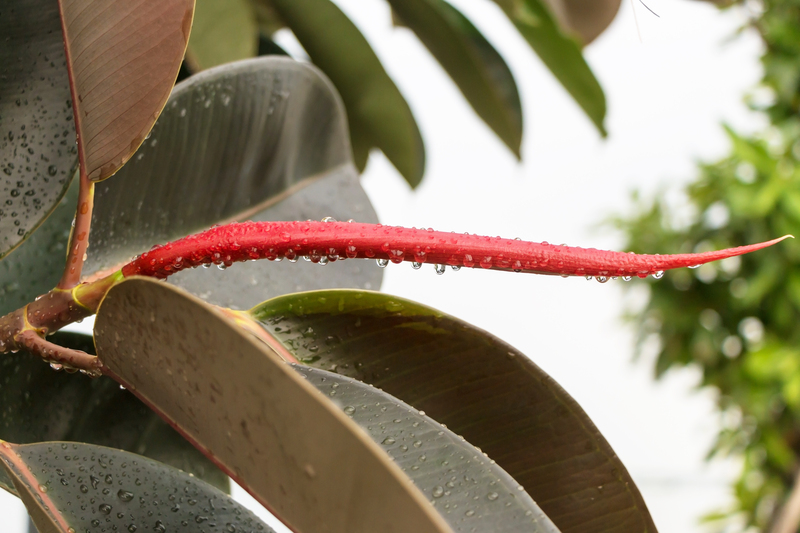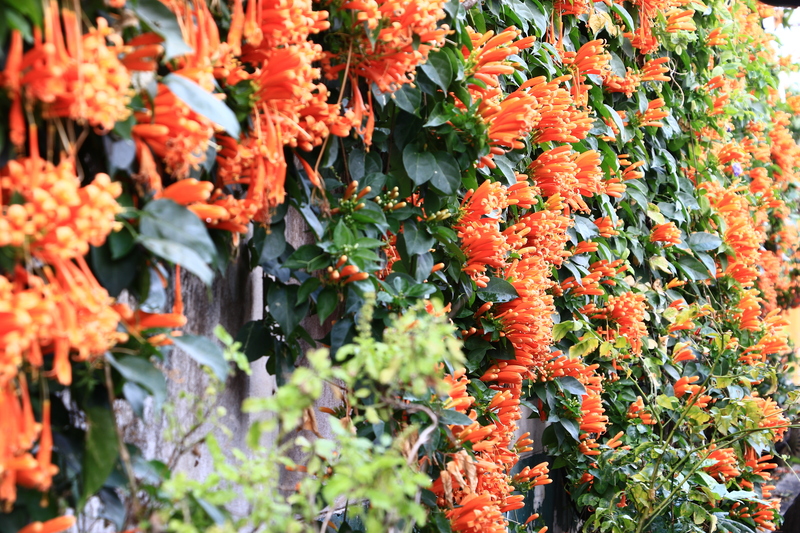Breathing New Life into a Forgotten Garden
Posted on 04/07/2025
Is there a neglected patch in your yard that once glimmered with color or provided fresh herbs for dinner? Perhaps an inherited lot, overgrown and wild? Restoring a forgotten garden is a rewarding endeavor that transforms not just landscapes, but lives. Breathing new life into a forgotten garden allows homeowners, communities, and nature lovers to reconnect with the past and create a sustainable, vibrant future.
Understanding the History of Your Lost Garden
Before you sharpen your pruners and grab your gloves, take a moment to uncover the story behind the neglected space. Was it a formal Victorian garden, a productive vegetable plot, or a wild cottage retreat? A garden's history provides clues to its original design and potential restoration.
- Explore old photographs or maps to glimpse the garden's former layout.
- Interview previous owners or neighbors who might recall its features or plantings.
- Survey antique seed catalogs or records for popular varieties from the relevant era.
This research lays the foundation for choices that honor the garden's legacy while adapting it for modern enjoyment.
Assessing the Current State
Every forsaken garden tells a story of neglect, but also resilience. Many plants survive years of abandonment, offering a foundation for your restoration. Begin with a comprehensive assessment:
- Identify and document existing plants, noting their health and maturity.
- Map hardscape features such as pathways, fountains, or ornamental stones that might be hidden under growth.
- Evaluate soil quality--neglect often leads to compaction, erosion, or nutrient depletion.
This assessment helps determine what can be saved, renovated, or needs replacing as you embark on revitalizing the forgotten landscape.
Clearing, Cleaning, and Rejuvenating the Space
Once you've mapped out the state of your garden, it's time to roll up your sleeves and start the transformation. Breathing new life into a garden usually means lots of physical labor, but the results are immensely satisfying.
Initial Cleanup
- Remove invasive weeds and debris that hinder plant health and crowd out desirable species.
- Prune overgrown shrubs and trees to restore shape, improve sunlight and air circulation.
- Clear paths and hardscape by power-washing, relaying stones, or replacing decayed materials.
Take care not to overclear; some "weeds" are actually treasured survivors or beneficial pollinator plants.
Restoring Soil Health
A forgotten garden's revival depends on healthy, living soil. Years of neglect can mean compaction, poor drainage, or low fertility. To rejuvenate:
- Test soil pH and nutrients at a local extension service or with a store-bought kit.
- Amend with organic matter (compost, leaf mold, well-rotted manure) to improve structure and increase microbiological activity.
- Consider mulching to conserve moisture and suppress renewed weed growth.
- Aerate heavy soils by hand or machine to encourage root development and drainage.
Investing in the earth beneath your feet ensures your revived garden flourishes for years to come.
Rediscovering and Preserving Original Plants
During restoration, you'll discover relics of the garden's former glory. Ancient fruit trees, bulbs, or heirloom roses often outlast neglect. Whenever possible:
- Assess health and prune back safely rather than cutting down old shrubs or trees at first glance.
- Propagate historic plants by division, cuttings, or seeds for new areas of the garden.
- Use reference catalogs or consult expert horticulturists to properly identify and care for these treasures.
*Preserving original plants* not only celebrates history, but can provide resilient, site-adapted species that thrive in their native context.

Redesigning with Respect and Creativity
Now that your garden is cleared, cleaned, and assessed, breathe new life by striking a balance between preservation and innovation.
Planning a Garden Revival
- Sketch a design plan that incorporates both recovered elements and new features.
- Create a mood board using colors, themes, and materials that reflect both the site's history and your personal tastes.
- Choose a garden style (cottage, formal, wildlife, edible) befitting your lifestyle and maintenance abilities.
The best garden revitalizations marry the old with the new, cherishing the past while welcoming future generations.
Choosing Plantings for Renewal
Select plantings that respect the garden's roots but meet contemporary needs:
- Native plants for low-maintenance wildlife habitat and ecological health.
- Pollinator-friendly flowers to support bees, butterflies, and birds.
- Drought-tolerant or climate-adapted species in areas facing water challenges.
- Herbs, vegetables, and fruit-bearing shrubs for a modern edible twist.
Incorporating a mix of perennials and annuals ensures year-round interest while reducing future labor.
Enhancing with Hardscape and Artistic Features
While plants are the soul of the garden, paths, seating, and art enrich the experience. For a comprehensive transformation:
- Repair or rebuild retaining walls, patios, and trellises using original materials when possible.
- Install water features or bird baths to attract wildlife and create relaxing ambiance.
- Add sculpture or upcycled decor to infuse personality and whimsy.
*Thoughtfully designed hardscaping* can accentuate plantings, guide movement, and define garden rooms or social spaces.
Maintenance and Long-term Care
A truly revitalized forgotten garden will only flourish with regular care. Set up a sensible maintenance plan from the outset to preserve your hard work.
- Schedule tasks seasonally--pruning, dividing, planting, and mulching.
- Implement pest and disease management through organic or integrated pest management methods whenever possible.
- Monitor irrigation, adjusting for rainfall and plant requirements.
- Foster a composting system for sustainable garden nutrition and waste reduction.
Regular care keeps your renewal on track and ensures that the spirit of the garden lives on for future generations.
Community Involvement and Sharing
Reviving a neglected garden can bring communities and families together. Consider:
- Inviting neighbors or local gardening groups for planting days or restoration events.
- Hosting educational workshops focused on sustainable gardening or heritage plant preservation.
- Creating a produce-sharing or flower exchange program to foster local ties.
Sharing the journey of revitalization multiplies the benefits and inspires others to embark on their own restoration projects.
Ecological and Emotional Benefits of Reviving a Forgotten Garden
A forgotten garden's restoration does more than beautify--it delivers unique ecological and emotional rewards:
- Restores biodiversity, creating a haven for beneficial insects, birds, and small wildlife.
- Improves air and soil quality through increased plant cover and organic practices.
- Sequesters carbon and moderates temperatures, contributing to climate resilience in urban environments.
- Offers mental and physical health benefits, from stress relief to exercise and creative fulfillment.
- Cultivates a sense of stewardship and connection with the natural world and personal heritage.
The legacy of breathing new life into forgotten gardens ripples outward, benefitting families, communities, and the planet for years to come.

Success Stories: Forgotten Gardens Reborn
Across the globe, everyday people, historical societies, and nonprofits have undertaken stunning garden revivals. From crumbling urban courtyards transformed into community vegetable plots, to abandoned manor house lawns restored as wildlife meadows, each story is a testament to hope and hard work.
- In London, volunteers restored the historic Geffrye Museum gardens, unearthing ancient trees and rare perennials.
- In Detroit, a network of urban farmers revitalized vacant lots into productive vegetable gardens for food-insecure neighborhoods.
- Small towns worldwide are converting overgrown parks and cemeteries into peaceful, biodiverse havens for wildlife and residents alike.
Final Thoughts: Start Your Forgotten Garden Revival Today
Breathing new life into a forgotten garden is a challenge--with brambles, mud, and muscle aches aplenty. But the rewards are unparalleled. You honor history, nurture wildlife, eat fresher food, and find peace under leaves that once languished in the shade. Every act of restoration stitches the landscape--and our spirits--closer together.
Whether you manage a postage-stamp yard or a sprawling, overgrown estate, your efforts will resonate for decades. So pick up your spade, call a friend, and begin. The next chapter in your garden's story--and your own--starts now.
If you have revived a garden or are inspired to start, share your story and join the worldwide community of garden rescuers. Breathe new life into forgotten gardens everywhere!

